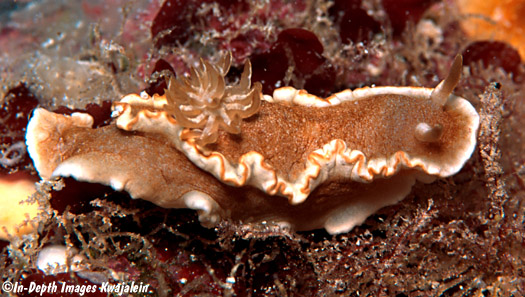
Like Doriprismatica atromarginata, G. rufomarginata seems rare in the Marshalls unless you search in the caves and ledges of the windward seaward reef's groove and spur system. This zone, where the seaward slope meets the intertidal reef, is heavily pounded by crashing waves and intense surges during most of the year. Only during the doldrums is it possible to dive this area. This species feeds on a dark gray clumping sponge that grows in the groove and spur ledges. Occasionally the sponge grows a bit too massive and is torn off by the surge. The sponge colony, sometimes carrying nudibranch riders, washes across the intertidal reef and ends up in the lagoon. We often find sponges still with nudibranchs attached sitting on sandy lagoon slopes. Unfortunately, this sponge, the sole prey of G. rufomarginata, does not normally live in this area, so once the sponge is gone, the nudibranchs may starve unless they can find another sponge colony washed across from the seaward side. We have seen G. rufomarginata at Enewetak, Kwajalein, and Bikini Atolls in the Marshalls, and John and Lynette Flynn have recorded them from Rongelap. They are abundant in Hawaii. and we have also found them in the Solomons.

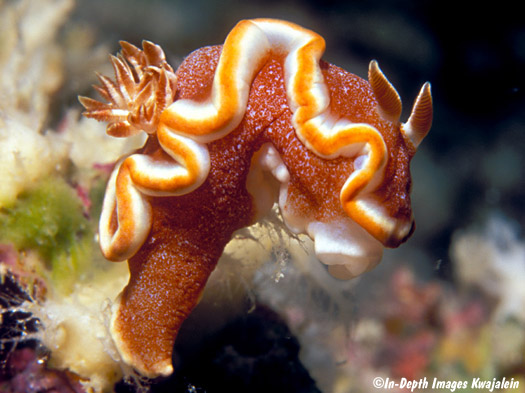
The individual below has an abnormality. Its two rhinophore pockets are connected, so both rhinophores extend from the body from the same hole.
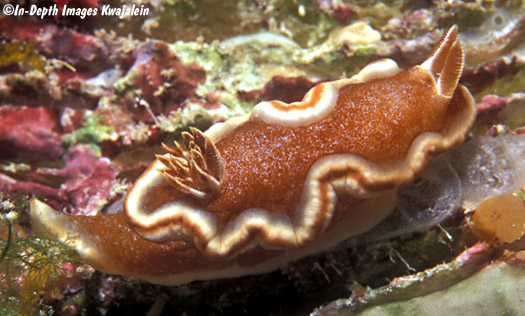
This is the egg mass of Glossodoris rufomarginata.
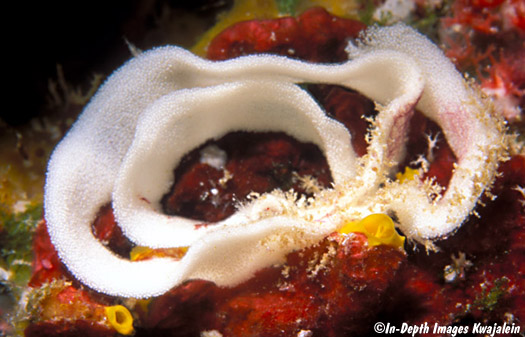
The anus opens to the outside world in the middle of the cluster of gills. This animal is on its prey sponge.
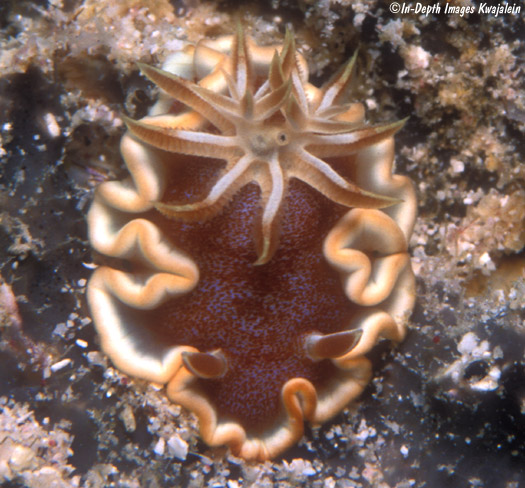
The species can be quite variable. The two individuals below were found on the same chunk of prey sponge.
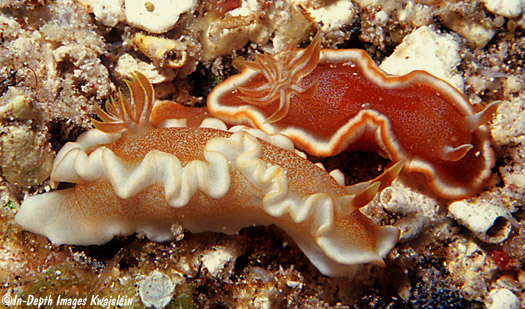
The lighter colored specimens in the two photos below were found on a Kwajalein Atoll lagoon reef on 25 May 2009. They were on chunks of sponge that had been rolled across the reef from oceanside. The particular pink coral in the lower photo is abundant in the seaward groove and spur system, but does not naturally occur elsewhere, at least not in that growth form.
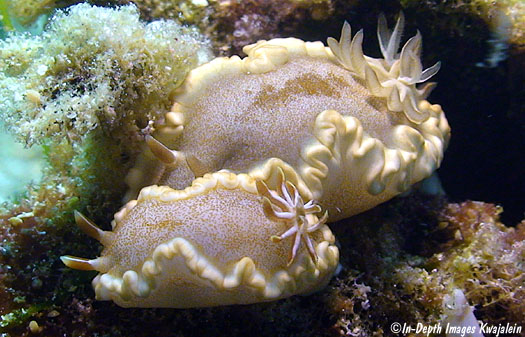
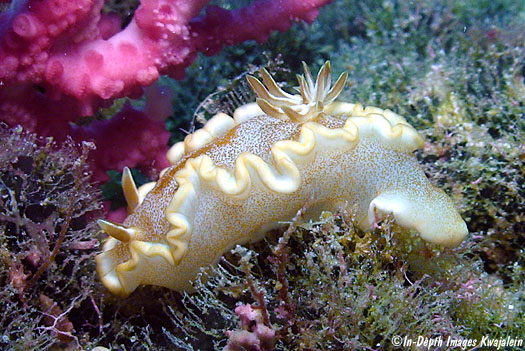
Note added 090810: Recently we've found that many of the rocks and clumps of sponge washed over from the seaward reef do not make it all the way out to the Halimeda patches on the sand flats and slopes of the lagoon side of the reef. Instead, they roll across the reef to the lagoon side of the reef flat and fall down a rocky berm that is commonly present and ranges from 1/2 to about 2.5 meters depth at the top (depending on the tide) down to 2 to 4m at the bottom. Especially along the bottom edge of this berm are numerous rocks that have obviously washed all the way across the reef from the seaward groove and spur zone; they often have attached algae, sponges, and corals that are generally found only in that area. Digging through this jumble of rocks yields numerous specimens of G. rufomarginata. In the photo below taken at the base of this berm on 9 August 2009, 11 specimens are visible devouring the loose remnant of a gray sponge colony that had washed across and been buried in the pile of rocks. Several more specimens are on the back side of the sponge.
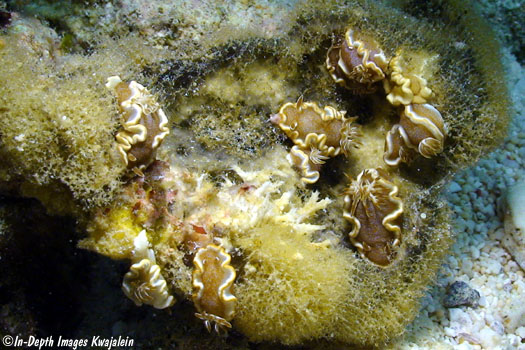
This large individual was on a reef-crossing sponge colony along with three others and several egg masses. The sponge was still in good shape and would probably last a while.
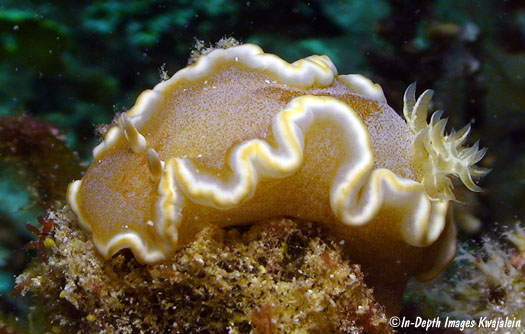
This pair at Rongelap Atoll was found by Ken Cone and Beth Van Zummeren.
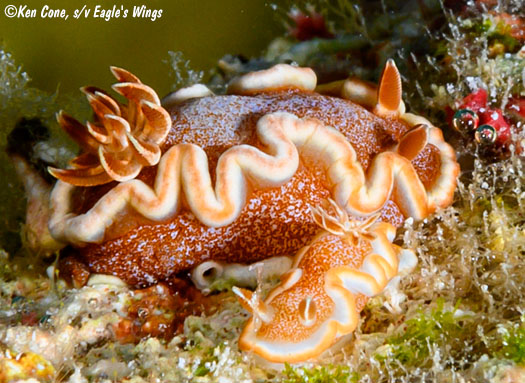
Created 3 January 2006
Updated 3 May 2021